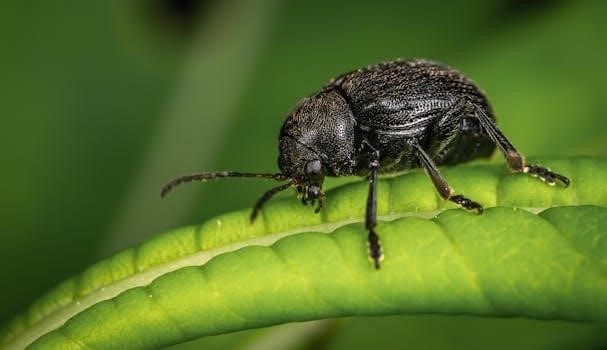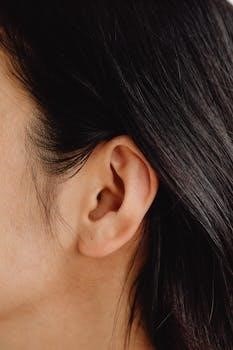
what is life a guide to biology with physiology
What Is Life? A Guide to Biology with Physiology
“What Is Life? A Guide to Biology with Physiology” serves as an accessible entry point into the world of biological sciences. It connects core concepts to everyday life, fostering critical thinking. The book also delves into the intricate processes and systems governing life.
Overview of “What Is Life? A Guide to Biology with Physiology”
This guide, penned by Jay Phelan, is designed to make biology accessible and relevant, especially for students who may not pursue further studies in the field. It uniquely integrates physiology, offering a comprehensive view of living organisms. This edition is published by W.H. Freeman & Company. The book emphasizes the interconnectedness of biological phenomena, from molecules to ecosystems.
With the inclusion of thought-provoking questions and real-world applications, the book encourages readers to develop critical thinking skills. Interactive learning tools further enhance the educational experience. The textbook aims to empower students by showing them how biology impacts their lives. Jay Phelan’s experience as an educator ensures the book’s clarity and engaging nature.
Key Topics Covered in the Book
The book covers a spectrum of vital areas within biology, beginning with cellular biology, which explores the fundamental units of life. Genetics is another key area, unraveling the mechanisms of heredity and variation. It also delves into the principles of evolution, tracing the history and diversification of life on Earth.
The book examines ecology, studying the interactions between organisms and their environment. A substantial portion is dedicated to human anatomy and physiology, offering insights into the structure and function of the human body. These topics are intertwined, providing a holistic understanding of life. The text utilizes real-world examples and questions to make complex concepts more accessible to students.

Author Jay Phelan
Jay Phelan is the author of “What Is Life? A Guide to Biology with Physiology.” He brings years of experience and expertise to make biology accessible and engaging for all students.
Phelan’s Teaching Experience
Jay Phelan has a wealth of teaching experience, particularly at UCLA, where he has taught introductory biology for fifteen years. He has experience teaching both large lectures for majors and nonmajors. His teaching style incorporates real-world applications and high-interest case studies. Phelan is known for his ability to make complex biological concepts accessible and engaging. He uses biology as a springboard for developing critical thinking skills. His award-winning teaching has earned him recognition. Phelan’s experience informs his writing, ensuring the textbook is effective for students. He is committed to helping students understand biology; His experience ensures that the textbook is engaging and effective.
Phelan’s Educational Background
Jay Phelan possesses a strong educational foundation that underpins his expertise in biology. He received his Ph.D. in evolutionary biology from Harvard University in 1995. Prior to his doctoral studies, Phelan earned his master’s degree from Yale University. He also holds a bachelor’s degree from UCLA. Phelan’s education in evolutionary biology provides him with a deep understanding. His educational background demonstrates his commitment to the field. His degrees from prestigious institutions highlight his knowledge and skills. Phelan’s education has equipped him to effectively teach and write about biology. He is a well-respected scholar. His academic achievements demonstrates his ability to explain complex topics.

Editions and Availability
“What Is Life? A Guide to Biology with Physiology” has multiple editions available. These editions can be purchased or rented from various online bookstores and physical locations. Check ISBNs to ensure you get the edition you want.
Different Editions of the Book
“What Is Life? A Guide to Biology with Physiology” has been published in multiple editions, including a 2nd, 3rd, and 5th edition. Each edition may contain updated information, revised content, and new features designed to enhance the learning experience. The 5th edition, for example, has ISBNs 9781319360689, 1319360688 and 9781319272531, 1319272533.
Instructors may also find resource manuals and test banks specific to certain editions. Earlier editions, like the 2nd, might have instructor resource manuals with test banks. Students should always check the edition and ISBN to ensure they align with their course requirements, as content can vary.
Later versions feature integration with online learning tools like Achieve, offering interactive learning experiences. Always confirm the features and content match your needs.
Where to Buy or Rent the Book
“What Is Life? A Guide to Biology with Physiology” is available from a variety of retailers. New and used copies can be purchased online from sites like Amazon and Pango, offering potential savings. Digital versions, including eTextbooks, are also available with ISBNs like 9781319360689 and 1319360688.
Students can explore options to rent the book, which may be a more cost-effective solution. Check with college bookstores, online rental services, or platforms offering used books. When buying used, verify the edition matches course requirements.
Some online platforms may offer access to Achieve, Macmillan’s learning tool, bundled with the book. Comparing prices across different sources ensures you find the best deal. Always ensure the ISBN matches the specific edition required for your course.

Core Biological Concepts
The book explores cellular biology, genetics, evolution, ecology, and human anatomy/physiology. It covers life’s intricate processes, from molecules to ecosystems, showing the interconnectedness of biological phenomena and their impact on our daily existence.
Cellular Biology
“What Is Life? A Guide to Biology with Physiology” provides a foundational understanding of cellular biology, exploring the cell’s structure, function, and processes. This section is crucial for grasping life’s fundamental units and their roles in organisms. The book examines cellular components, their cooperation, and how they contribute to tissue and organ function.
This exploration includes discussions on macromolecules, organelles, and their interactions within the cell. Furthermore, it delves into the chemistry of life, focusing on atoms, molecules, and their significance in supporting life’s processes. By understanding cellular biology, students gain insights into the intricate mechanisms driving life at its most basic level. This section also emphasizes the impact of cellular processes on human health and physiology.
Genetics
The “What Is Life? A Guide to Biology with Physiology” section on genetics unravels the mysteries of heredity and genetic information transfer. It explains how traits are passed from one generation to the next through DNA. This section also covers gene expression, mutations, and their impact on organisms. Students will explore the role of genetics in evolution and human health.
Moreover, the book touches upon genetic engineering and its applications in various fields. The genetics portion also addresses common misconceptions and discusses the ethical considerations surrounding genetic technologies. By delving into genetics, readers can understand how DNA analyses can overturn incorrect criminal convictions. This section is crucial for comprehending the basis of life’s diversity and inheritance patterns.
Evolution
The “What Is Life? A Guide to Biology with Physiology” section dedicated to evolution explores the mechanisms driving the change in species over time. It covers natural selection, genetic drift, and other evolutionary processes. The book also presents evidence supporting the theory of evolution. Students will learn about adaptation, speciation, and the history of life on Earth.
Furthermore, the evolution segment emphasizes the interconnectedness of all living organisms. It also explores the role of genetics in evolutionary change. The book addresses common misconceptions about evolution and highlights its significance in understanding biology. By studying evolution, readers gain insights into the diversity of life and how populations adapt.
Ecology
Within “What Is Life? A Guide to Biology with Physiology,” the ecology section illuminates the intricate relationships between organisms and their environment. Topics include population dynamics, community structure, and ecosystem function. The book explores energy flow, nutrient cycling, and the impact of human activities on ecosystems. It also examines biodiversity and conservation efforts.
Furthermore, the ecology section delves into the interactions between different species, such as competition, predation, and mutualism. Students will learn about ecological succession and the factors influencing community stability. The text emphasizes the importance of understanding ecological principles for addressing environmental issues. By studying ecology, readers gain a comprehensive perspective on the interconnectedness of life.
Human Anatomy and Physiology
The section on Human Anatomy and Physiology within “What Is Life? A Guide to Biology with Physiology” provides a detailed exploration of the human body. It covers the structure and function of organ systems, including the skeletal, muscular, nervous, and circulatory systems. Students will learn about homeostasis and the mechanisms that maintain internal balance. The book examines how these systems work together to support life.
Furthermore, this section delves into the intricacies of human physiology at the cellular and molecular levels. Topics include cell signaling, tissue organization, and the integration of physiological processes. Readers will also gain insights into common human diseases and disorders, as well as the impact of lifestyle choices on health.

Achieve Integration
“What Is Life? A Guide to Biology with Physiology” is integrated with Achieve, Macmillan’s online learning platform, to enhance the learning experience. Achieve offers interactive learning tools, assessments, and resources designed to help students master key biological concepts. This integration allows for personalized learning paths, adaptive quizzing, and immediate feedback, supporting student success.
With Achieve, students can access a wealth of multimedia resources, including videos, animations, and simulations, to deepen their understanding of complex topics. The platform also provides instructors with valuable data on student performance, enabling them to tailor their teaching strategies and provide targeted support. Achieve empowers students to explore biology’s impact on daily life.
Leave a Reply
You must be logged in to post a comment.